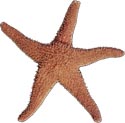|
 Earth
abounds with many, many different kinds
of living things: butterflies, mushrooms,
starfish, eagles, sharks, redwood trees,
caterpillars, ferns, amoebas, seaweed,
lions, and tigers, and bears ("Oh
my!"). The list goes on and on. Nearly
one and a half million different species*
of living things are known, and millions
more are yet to be discovered in the depths
of Earth's oceans and forests. Photo
© 2000-www.arttoday.com Earth
abounds with many, many different kinds
of living things: butterflies, mushrooms,
starfish, eagles, sharks, redwood trees,
caterpillars, ferns, amoebas, seaweed,
lions, and tigers, and bears ("Oh
my!"). The list goes on and on. Nearly
one and a half million different species*
of living things are known, and millions
more are yet to be discovered in the depths
of Earth's oceans and forests. Photo
© 2000-www.arttoday.com
Scientists use the words
"diversity," or "biodiversity," to describe different aspects of
the variety of life forms all around us. Species
diversity describes the number of different species in a region
or in the world. Genetic diversity describes
the differences within a single species. Classification
is the method we use to keep track of all the different kinds of
living things and how they are related to each other.
 All
the species on Earth look and behave very differently, yet all of
them are related. The mold growing on your bread, the trees growing
on your street, the insects buzzing about in your room, the pets
sleeping by your bed, and you, yourself, are all members of a single
type of life that descended from the same source. The evidence for
this conclusion is provided by the fact that all living things share
the following properties. All life on Earth is made of single cells
or groups of cooperating cells. All life on Earth uses the same
biochemicals to construct cell parts and to store and use energy.
All life on Earth uses the same chemical "language" and chemical
structure (DNA) to store and pass on genetic information. Thus,
there is a unity underlying all the rich diversity of life on Earth.
DNA image © 2000-www.arttoday.com All
the species on Earth look and behave very differently, yet all of
them are related. The mold growing on your bread, the trees growing
on your street, the insects buzzing about in your room, the pets
sleeping by your bed, and you, yourself, are all members of a single
type of life that descended from the same source. The evidence for
this conclusion is provided by the fact that all living things share
the following properties. All life on Earth is made of single cells
or groups of cooperating cells. All life on Earth uses the same
biochemicals to construct cell parts and to store and use energy.
All life on Earth uses the same chemical "language" and chemical
structure (DNA) to store and pass on genetic information. Thus,
there is a unity underlying all the rich diversity of life on Earth.
DNA image © 2000-www.arttoday.com
*A species
is a group of individual living organisms able to interbreed with
each other and produce fertile offspring.
|











